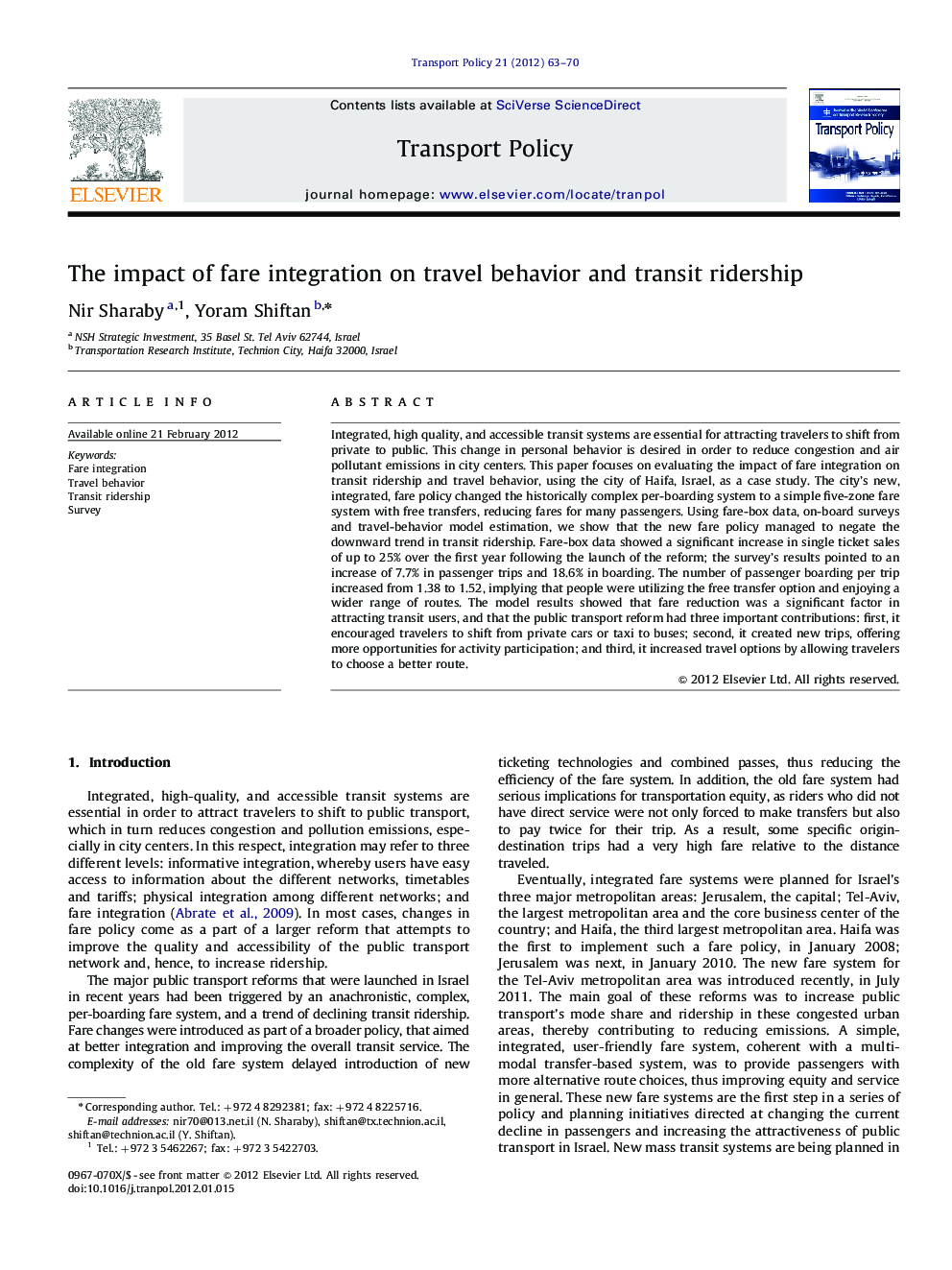| کد مقاله | کد نشریه | سال انتشار | مقاله انگلیسی | نسخه تمام متن |
|---|---|---|---|---|
| 1065185 | 1485856 | 2012 | 8 صفحه PDF | دانلود رایگان |

Integrated, high quality, and accessible transit systems are essential for attracting travelers to shift from private to public. This change in personal behavior is desired in order to reduce congestion and air pollutant emissions in city centers. This paper focuses on evaluating the impact of fare integration on transit ridership and travel behavior, using the city of Haifa, Israel, as a case study. The city's new, integrated, fare policy changed the historically complex per-boarding system to a simple five-zone fare system with free transfers, reducing fares for many passengers. Using fare-box data, on-board surveys and travel-behavior model estimation, we show that the new fare policy managed to negate the downward trend in transit ridership. Fare-box data showed a significant increase in single ticket sales of up to 25% over the first year following the launch of the reform; the survey's results pointed to an increase of 7.7% in passenger trips and 18.6% in boarding. The number of passenger boarding per trip increased from 1.38 to 1.52, implying that people were utilizing the free transfer option and enjoying a wider range of routes. The model results showed that fare reduction was a significant factor in attracting transit users, and that the public transport reform had three important contributions: first, it encouraged travelers to shift from private cars or taxi to buses; second, it created new trips, offering more opportunities for activity participation; and third, it increased travel options by allowing travelers to choose a better route.
► Fare integration has impact on transit ridership and travel behavior.
► Survey data showed increases of 7.7% in passenger trips and 18.6% in boarding.
► Fare reduction was a significant factor in attracting transit users.
► The reform managed to shift trips from private car or taxi to buses.
► It also created new trips, enhancing opportunity for activity participation.
Journal: Transport Policy - Volume 21, May 2012, Pages 63–70